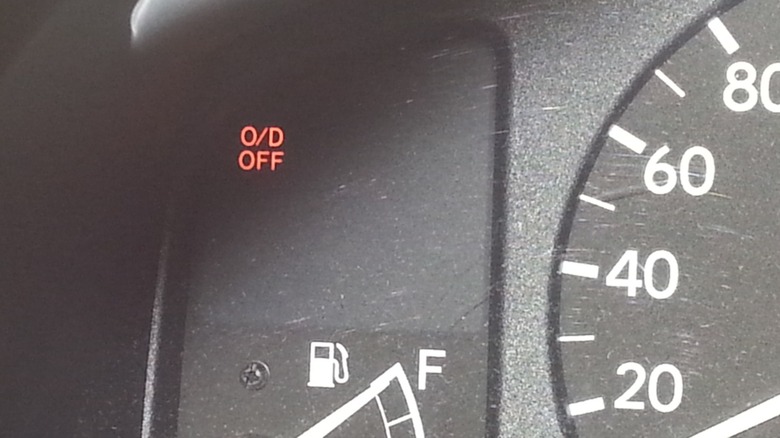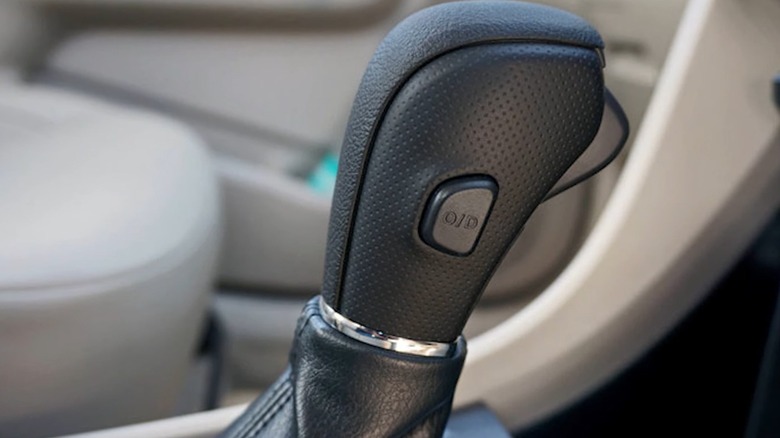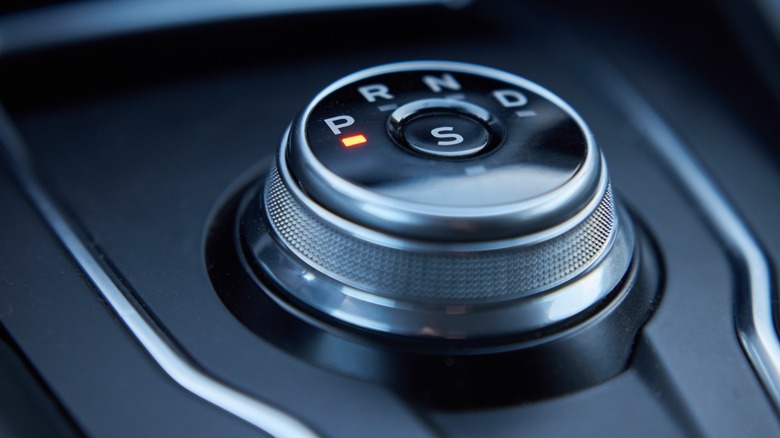What Does The 'O/D Off' Light Mean In Your Car?
If you remember driving an older automatic car or currently have one, you might have noticed the O/D Off switch that usually sits below the button you press to shift the vehicle. Or you might have unknowingly pressed this button and now see the 'O/D Off' warning light appear on your instrument panel.
Should you see this indicator light turn on, don't panic — there's nothing wrong with your car. It's just telling you that you temporarily locked out the higher gears on your automatic vehicle. When automatic transmissions first started appearing in the 1960s, most were only equipped with three-speed transmissions, with the third gear offering direct drive or a 1:1 ratio. This means your wheels would spin as fast as your engine's RPM.
As technology progressed and we wanted cars with better fuel economy, car makers started adding fourth and fifth gears, making the car run at a lower RPM at higher speeds. This is great for cruising along flat highways, but if you encounter terrain or less-than-optimal road conditions, your car might keep switching between the third and higher gears to keep up with the changing traffic and environment.
This can get annoying for the driver and needlessly stress the transmission. So, if that happens, press the O/D Off switch and limit your car to third gear. That way, you can keep it at third gear and don't have to deal with losing torque and power as you climb uphill while in fourth or fifth gear.
When should you turn off overdrive?
The best time to turn off overdrive is when you need your car to use lower gears for more consistent power. For example, if you're going uphill or driving up a steep driveway, you might want to keep your car in third gear or lower to ensure it doesn't stall halfway up. You can also use it if you drive downhill and don't want to overstress your brakes. By temporarily locking out the higher gears, you can use engine braking to control your car's speed.
You can also press the O/D Off button if you're towing a heavy load or you're maxing out your car's payload. Even if you're driving one of the small vehicles with great towing capacity, it's still better to keep the transmission at a lower gear. This will prevent the transmission from overheating or putting undue stress on the higher gears.
When you're driving on unpaved roads or during bad weather, it's also a good idea to switch off overdrive. This will reduce your car's top speed and increase fuel consumption, but you really should not drive fast in poor road conditions.
Most modern cars don't have the overdrive switch
The overdrive switch is usually located on the gear shifter or dashboard, with the O/D Off light on your dashboard indicating that the button is pressed. However, if this indicator light is flashing, your car's transmission likely has an issue that a trusted mechanic must look over.
Newer cars don't have this button, though. That's because these vehicles now have more than four or five gears, with many featuring six- and seven-speed transmissions and some models even offering a ten-speed option. And if you find your car hunting between gears when you're driving, you can switch to M mode and use the 'plus' and 'minus' on your gear selector or paddle shifters (if it's equipped with one) behind the steering wheel to select an appropriate gear.
But if you really need the engine power and the O/D Off switch does not cut it, you should use the Low or B gear on your car's gear shift. This will limit it to just using the second or third gear, allowing you to maximize your engine's power for pulling heavier loads or for holding lower speeds in downhill driving.


